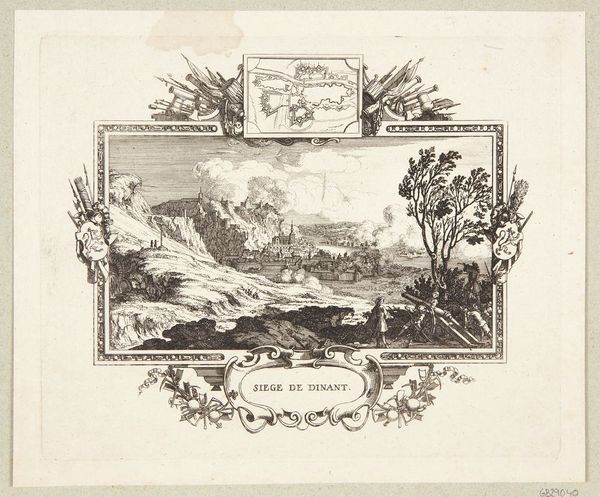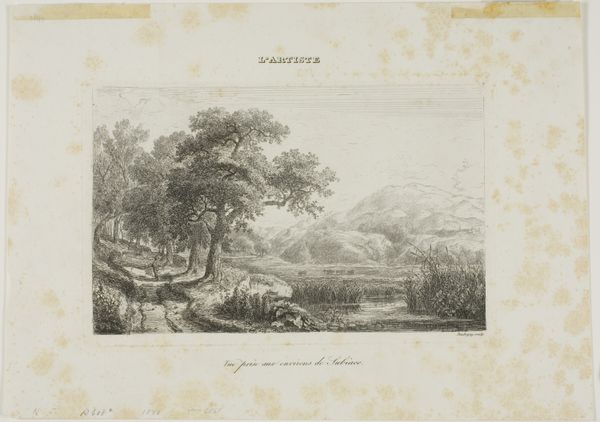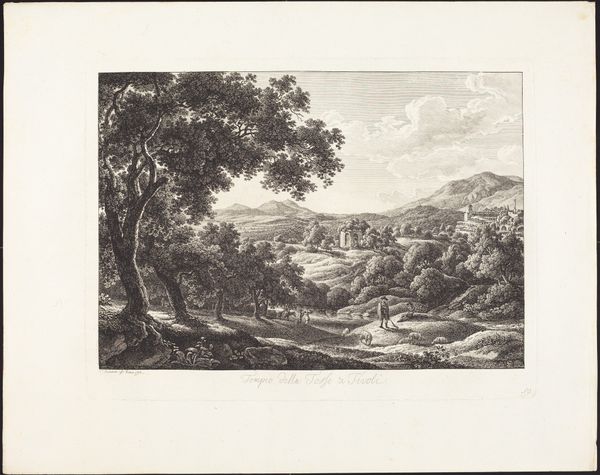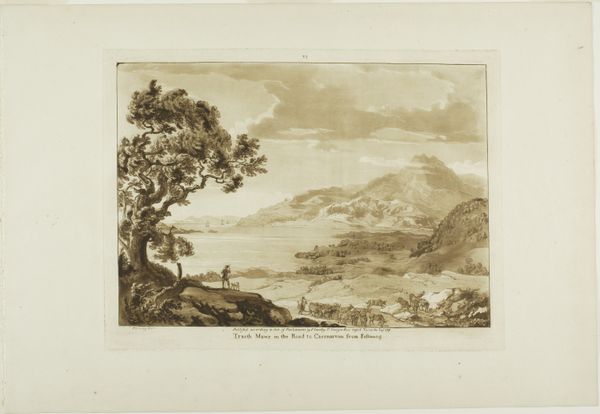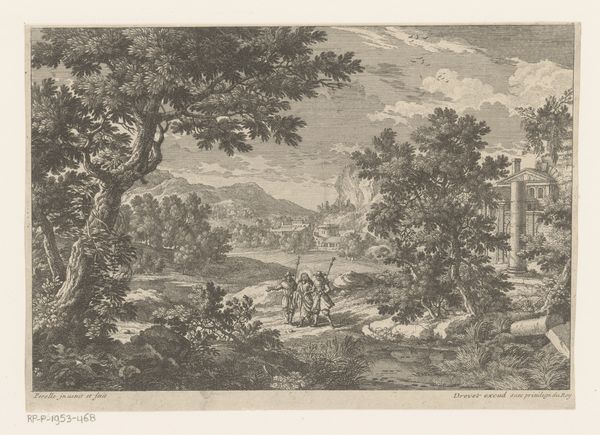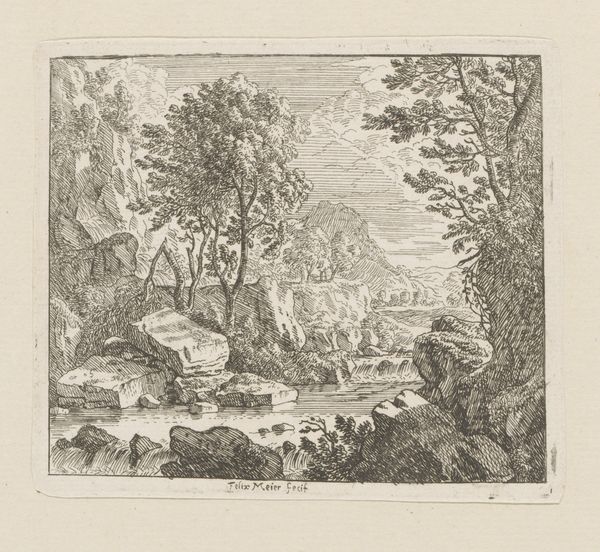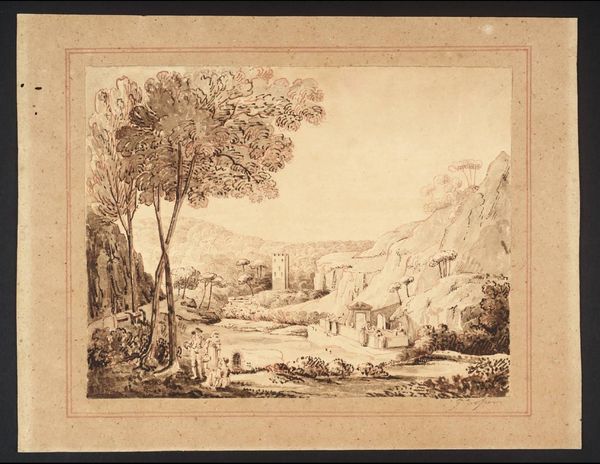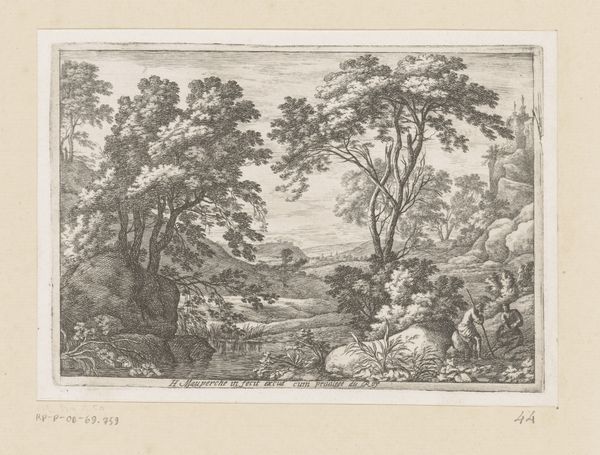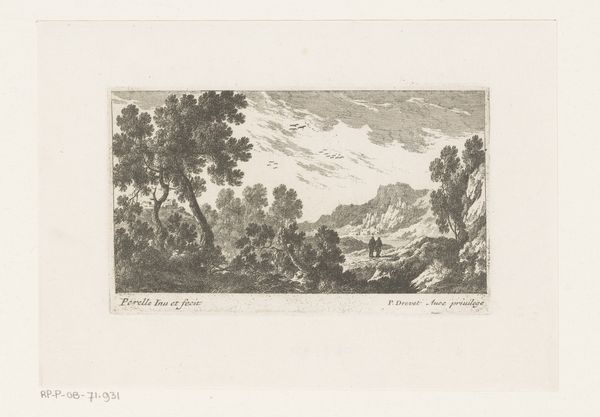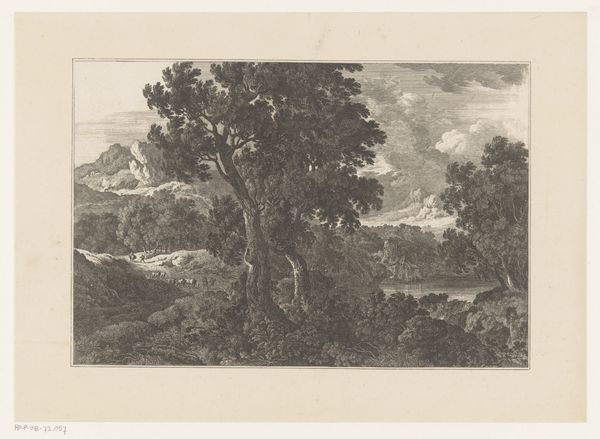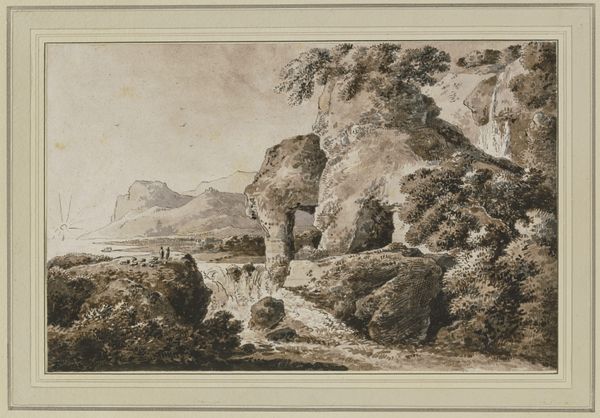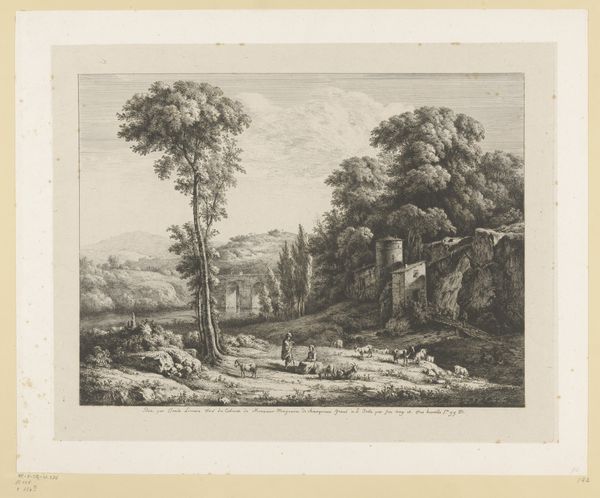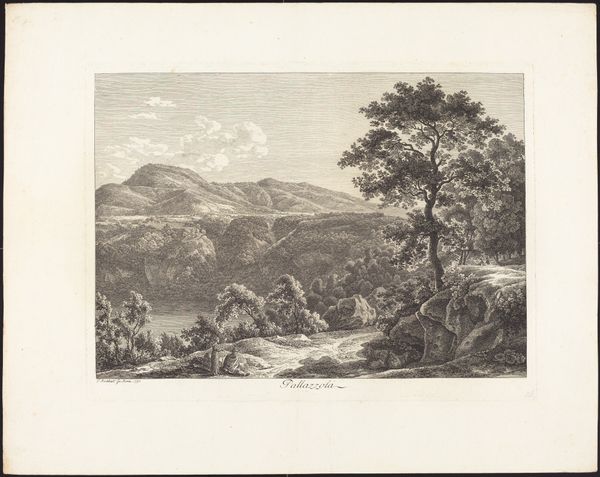
Gebirgslandschaft mit einer Ruine und zwei unter einem Baum ruhenden Wanderern 1789
0:00
0:00
drawing, etching, paper, ink
#
drawing
#
neoclacissism
#
etching
#
landscape
#
etching
#
paper
#
ink
#
romanticism
Copyright: Public Domain
This landscape with a ruin and resting wanderers was etched by Ferdinand Kobell in 1799. Etching, unlike painting, invites a mechanical reproduction, and therefore a wider distribution of images. To make this print, Kobell would have coated a metal plate with wax, then used a sharp needle to scratch his composition into the surface, exposing the metal. After submerging the plate in acid, he would then wash off the wax and apply ink, which would settle into the etched lines. The plate is then pressed onto paper, resulting in the final image. The etching process lends itself to fine detail, and the final image would have been seen as a valuable commodity for those who wished to own a piece of art. The picturesque scene of wanderers resting among ancient ruins evokes a romantic view of nature, but it is also a product of industrial progress, made possible by new methods of production and consumption. Thinking about the materials, processes, and social context of production helps us fully understand the meaning of this landscape print, blurring the lines between fine art and craft.
Comments
No comments
Be the first to comment and join the conversation on the ultimate creative platform.
